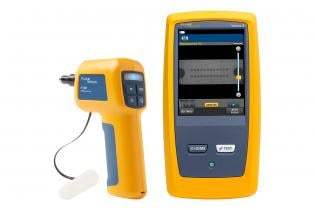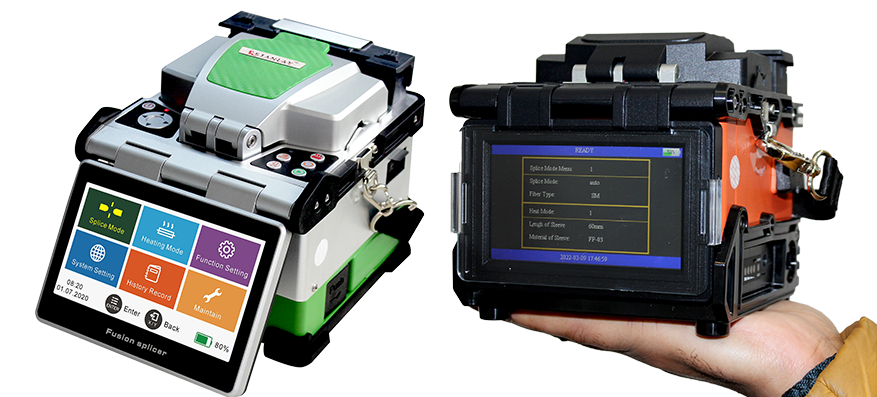All You Required to Find Out About Robotic Vision and Its Applications in Advanced Optical Dimension Solutions
Robotic vision represents a significant innovation in the crossway of computer system vision, artificial intelligence, and maker understanding. This modern technology enhances the precision of optical measurement systems, making it possible for real-time data evaluation and boosted quality assurance. Its impact spans numerous markets, from producing to medical care. The developing landscape of robot vision elevates concerns concerning future abilities and applications. What advancements lie in advance in this transformative area?
Recognizing Robotic Vision: Trick Concepts and Technologies
Robotic vision incorporates the modern technologies and techniques that enable makers to interpret and understand visual details from their atmosphere. This field incorporates components of computer system vision, man-made knowledge, and device discovering to assist in computerized decision-making based upon visual data. Trick principles include photo handling, which includes the improvement and evaluation of images to remove purposeful functions, and object recognition, which permits equipments to determine and identify items within a scene.

The Integration of Robotic Vision With Optical Measurement Systems
As industries increasingly demand precision and performance, the assimilation of robot vision with optical dimension systems has become a transformative approach. This harmony permits robotics to regard and translate their surroundings, enhancing the capability of optical measurement systems to assess and evaluate objects with unrivaled accuracy. By gearing up optical sensors with sophisticated imaging technologies, robot vision makes it possible for real-time data collection and handling, facilitating prompt modifications to measurement criteria.
The mix empowers automated systems to discover variations in dimensions, surface high quality, and placement, which are vital in top quality control procedures. Improved formulas, such as equipment learning, additional boost this assimilation by enhancing the systems' capacity to adapt to various environments and scenarios. The combination not just simplifies dimension processes but additionally lessens errors, ensuring that items satisfy strict sector requirements, consequently solidifying the role of robotic vision in the future of optical measurement systems.
Applications of Robotic Vision in Manufacturing
In contemporary production atmospheres, using vision systems has actually revolutionized production processes by enabling devices to do jobs with amazing precision and speed. Robotic vision systems are progressively utilized for quality assurance, where they examine products for problems and guarantee adherence to specs. These systems use cams and progressed algorithms to evaluate products in real-time, substantially decreasing the danger of human error.
Additionally, robot vision assists in automation in production line, enabling robotics to accurately recognize elements and construct them with minimal downtime. This technology additionally improves stock administration, as vision systems can check supply levels and discover inconsistencies, guaranteeing a seamless supply chain.
Robotic vision help in the execution of smart factories, where information from vision systems can be incorporated with various other technologies to optimize process webpage (optical measurement system). On the whole, the applications of robot vision in manufacturing demonstrate its vital role in improving effectiveness, top quality, and productivity throughout various markets
Robotic Vision in Medical Care: Changing Client Treatment

In rehabilitation, robotic vision aids in keeping an eye on patient development and customizing therapy sessions to individual demands. It sustains physician by automating jobs such as data collection and individual tracking, enabling even more time to concentrate on straight client interaction. Additionally, robotic vision improves telemedicine by enabling remote medical diagnosis and digital examinations, connecting the void in between clients and doctor. Generally, the application of robot vision in medical care is changing individual care, causing enhanced outcomes, efficiency, and patient satisfaction.
Future Patterns and Growths in Robotic Vision Modern Technology
The rapid development of robot vision innovation assures to additionally improve its applications throughout numerous markets, consisting of health care. Future trends indicate a substantial change in the direction of including synthetic knowledge and machine knowing, allowing systems to learn from substantial datasets and improve precision over time. Improved sensor innovations and deep understanding algorithms are anticipated to refine things acknowledgment capabilities, allowing robotics to analyze complex atmospheres much more effectively.

The combination of enhanced fact (AR) with robotic vision will likely reinvent exactly how robots aid in medical procedures and diagnostics. This harmony will certainly assist in real-time data visualization, improving decision-making procedures. Additionally, miniaturization of parts will certainly cause more portable and versatile robotic vision systems ideal for a range of jobs. As these improvements unfold, sectors will witness raised automation and efficiency, strengthening robotic vision as a foundation of ingenious technological remedies.
Often Asked Concerns
What Are the Main Components of a Robotic Vision System?
The main elements of a robotic vision system include electronic cameras for picture capture, processors for information evaluation, formulas look at more info for analysis, and actuators for motion. With each other, these aspects make it possible for robots to perceive and engage with their setting properly.
Exactly How Does Robotic Vision Improve Precision in Measurements?
Robotic vision enhances dimension accuracy by using advice advanced imaging technologies, enabling precise object detection and spatial analysis. This capacity decreases human error, increases repeatability, and enables real-time changes, ultimately improving overall measurement reliability and performance.
What Industries Advantage Many From Robotic Vision Innovation?
Various markets profit significantly from robot vision technology, including manufacturing, health care, farming, and logistics. These industries utilize enhanced precision, efficiency, and automation, bring about improved efficiency and minimized operational prices in their respective processes.
Can Robotic Vision Equipments Operate In Low-Light Conditions?
Robotic vision systems can indeed work in low-light problems, using advanced sensing units and algorithms to boost picture clarity. This ability permits them to carry out efficiently in different settings, consisting of commercial and security applications, despite having minimal illumination.
What Are the Expenses Related To Carrying Out Robotic Vision?
The prices connected with applying robot vision differ substantially, influenced by components such as cameras, software program, and assimilation. Extra costs include upkeep, training personnel, and prospective upgrades to existing systems, which can gather with time.